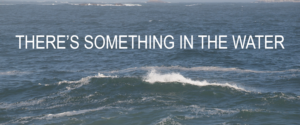On 1 February 2020, Dr. Ian Stewart served as moderator for a panel at the annual conference of the Social Activists Law Students’ Association, Law, Social Activism, and the Media held at the Shulich School of Law at Dalhousie University. The conference explored how media, law, and activist movements impact and shape each other. The panel Ian was invited to moderate was entitled “Environmental Racism and the Media,” and featured Dr. Ingrid Waldron (Associate Professor, School of Nursing, Dalhousie University), Louise Delisle, founder and president of Shelburne’s South End Environmental Injustice Society (SEED), and Natalie Clifford, of Clifford Shiels Legal, who is Mi’kmaq. The term “environmental racism” is complex. One aspect that is of particular relevance to EIUI’s work is that it explores how race plays a role in how environmental policy making, and the knowledge processes that contribute to it, are influenced by the dynamics of differential access: access to information, to political decision making power, and to opportunities for inclusion in socio-ecological management (Bullard, Johnson & Torres, 2011).
A growing body of work in environmental information management is drawing attention to this issue of differential access, placing emphasis on how ideals, for example, of co-production, of public engagement and participatory democracy in environmental management, can fail to be conscious of such differentials (Chilvers & Kearnes, 2016; Turnhout et al., 2020). Environmental racism, as a field of both research and action, turns the spotlight particularly on the fundamental role of race in those differentials (Guinier & Torres, 2003; Waldron, 2018), including the experiences and challenges of Canada’s First Nation communities in contributing to the generation and flow of environmental management in our supposedly “post-colonial” society (Nosek, 2017; Wiebe, 2017).
The panel was an opportunity to present to a diverse audience (which included students, faculty, members of the public and the media) the central issues and concepts of those working on environmental racism in Nova Scotia, particularly as it impacted by efforts to gather and share information on these issues. A further focus of the panel was Dr. Waldron’s recent monograph, There’s Something in the Water: Environmental Racism in Indigenous and Black Communities (2018). Both Dr. Waldron and Ms. Delisle, whose work on environmental justice with SEED in the south shore of Nova Scotia figures in the research that informed Dr. Waldron’s book, spoke to the critical but also problematic role of publicly accessible information and public attitudes (or lack thereof) to environmental racism. The book itself has now become a film by the same title, and premiered last year at the TIFF, co-directed by Canadian film star Ellen Page. Ms. Clifford offered her perspective as a Mi’kmaq lawyer and an expert in public relations, particularly in regards to the current issue of the pulp mill in Boat Harbour, Nova Scotia (Baxter, 2017).
As the spirited Q&A afterwards made clear, Nova Scotia faces considerable challenges going forward in dealing with legacies of environmental racism. In the complex processes by which environmental information informs decisions, issues of justice with regard to whose information matters, and what counts as information, will continue to play a vital role in addressing those challenges.
References
Baxter, J. (2017). The mill. Fifty years of pulp and protest. Lawrencetown Beach, NS: Pottersfield Press. ISBN 978-1-988286174.
Bullard, R., Johnson, G., & Torres, A. (2011). Environmental health and racial equity in the United States: Building environmentally just, sustainable, and livable communities. Washington DC: American Public Health Association. ISBN 978-0-875530079
Chilvers, J., & Kearnes, M. (Eds.). (2016). Remaking participation. Science, environment, and emergent publics. New York: Routledge. ISBN 978-0-415857406
Guinier, L, & Torres, G. (2003). The miner’s canary: Enlisting race, resisting power, transforming democracy. Cambridge, MA: Harvard University Press. ISBN 0-6740-04698
Nosek, G. (2017). Re-imagining indigenous peoples’ role in natural resource development decision-making; Implementing free, prior, and informed consent in Canada through indigenous legal traditions. U.B.C. Law Review, 50(1), 95-160. https://ssrn.com/abstract=2805599
Turnhout, E., Metze, T., Wyborn, C., Klenk, N., & Louder, E. (2020). The politics of co-production: Participation, power, and transformation. Current Opinion in Environmental Sustainability, 42, 15–21. https://doi.org/10.1016/j.cosust.2019.11.009
Waldren, I. (2018). There’s something in the water: Environmental racism in Indigenous and Black communities. Black Point, NS: Fernwood Press. ISBN: 978-1-773630571.
Wiebe, S. M. (2016). Everyday exposure. Indigenous mobilization and environmental justice in Canada’s chemical valley. Vancouver: UBC Press. ISBN 978-0-774832656
Author: Ian Stewart
